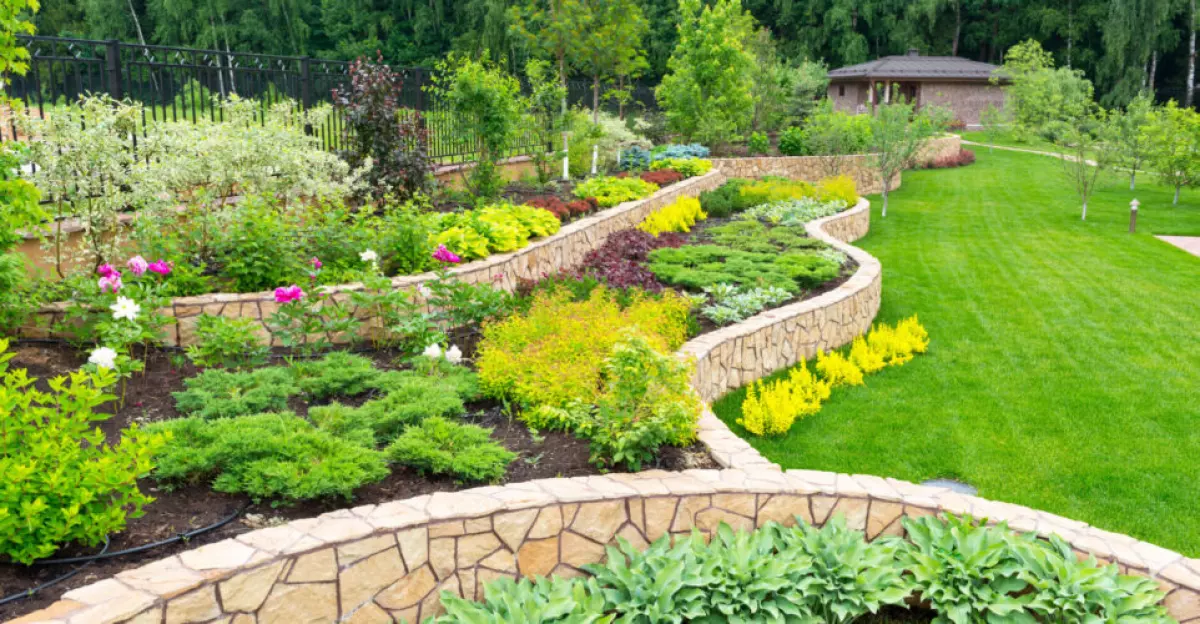If you're someone who only has experience maintaining a tidy front yard or tending to a small flower bed, the prospect of taking on a complete landscape design project may seem daunting. But fear not, because with the right guidance, you can transform your outdoor space into a beautiful and functional landscape that enhances the value of your home and enriches your daily life.
 Image source: Sanaulac.vn
Image source: Sanaulac.vn
Understanding Your Landscape Type
The first step in landscape design is to understand the type of landscape you have. Whether you live in a mountainous area, a flat terrain, or along the coast, each landscape type has its own unique characteristics that you need to consider when planning your design. Factors such as soil type, weather conditions, and plant hardiness zones play a crucial role in determining the best choices for your outdoor space.
The Fundamentals of Landscape Design
Creating an aesthetically pleasing landscape involves understanding the basic principles of design. These principles help you create a harmonious and balanced outdoor space that is visually appealing. Here are some key elements to consider:
Balance
Achieving visual balance is essential in landscape design. You can create a sense of equilibrium by strategically placing different elements, both symmetrically and asymmetrically. While the two sides of your property don't need to be identical, striking a balance ensures a cohesive and harmonious overall look.
Focalization
Focal points draw attention to specific features in your landscape. Whether it's a stunning water feature or a garden area with a dominant color scheme, focalization adds interest and prevents your design from looking monotonous.
Proportion
Proportion is all about scaling elements in relation to the overall size of your landscape. It's important to choose plants and hardscape features that are proportionate to the space they occupy. Oversized elements can overwhelm, while undersized ones may have little impact.
Repetition
Repeating certain elements in your landscape design creates unity and flow. Whether it's the shape of plants, decorative stones, or edging, repetition helps guide the viewer's eye and creates a cohesive look.
Rhythm
Rhythm refers to the changes in flow and repetition within your landscape. Varying shapes, sizes, colors, and textures create rhythm and add interest to your design. Think of it as creating a beautiful sequence that keeps the eye moving throughout the space.
Transition
Smooth transitions between different landscape elements are essential for a seamless design. Gradual changes in heights, colors, or textures help blend different areas together and create a natural flow.
Unity
Unity brings all the elements of your landscape design together. It's the harmony and consistency that ties everything into a cohesive whole. By incorporating rhythm, repetition, balance, and transitions, you create a unified and visually appealing outdoor space.
Designing Your Landscape with Style and Purpose
Now that you understand the fundamentals, it's time to put your knowledge into practice. Here are some key design elements to consider:
Color
Color is a powerful tool in landscape design. It can set the mood, create dimension, and direct attention to specific areas. By using a combination of warm and cool colors, you can create contrast or unity. Experiment with different native plants and flowers to add pops of color throughout your landscape.
Form
The form of plants, trees, and hardscape features plays a significant role in your design. Shapes, such as broad, columnar, oval, spreading, and weeping, can add visual interest and create different levels of proportion. Don't forget to consider the texture of plants as well, as it adds another layer of dimension to your design.
Line
Lines are created by borders, walkways, and transitions in your landscape. They guide the eye and separate different areas, creating structure and adding visual appeal. Straight lines create a neat and orderly look, while curved lines add a sense of organic flow. Use lines to highlight focal points or draw attention to specific features.
Scale
Scale refers to the size of objects in relation to their surroundings. It's important to choose plants, hardscape features, and other elements that are proportionate to the space they occupy. Consider how objects fit into the overall landscape, as this can impact the perceived size of your outdoor space.
Texture
Texture plays a subtle yet crucial role in landscape design. It refers to the surface quality of objects, such as the roughness of hardscape materials or the thickness of grasses. By incorporating a variety of textures, you can create depth and visual interest. Coarse textures draw attention, while fine textures recede into the background.
Seeking Professional Guidance
Embarking on a landscape design project as a beginner can be both exciting and challenging. If you're feeling overwhelmed or unsure about designing your own landscape, don't hesitate to seek professional help. Hiring a landscape designer can provide you with expert advice, creative ideas, and the assurance that your vision will be brought to life.
Remember, landscape design is an investment in both your property and your quality of life. By understanding the basics and incorporating your own personal style, you can create a stunning outdoor space that enhances your home's value and brings you joy for years to come.
Conclusion
Creating a beautiful landscape is within reach, even for beginners. By understanding the fundamentals of landscape design and incorporating key elements such as color, form, line, scale, and texture, you can transform your outdoor space into a visually appealing and functional oasis. Whether you choose to embark on a DIY project or seek professional guidance, the end result will be a landscape that adds value to your home and enriches your daily life.
Now that you have an understanding of landscape design for beginners, it's time to start planning your own outdoor masterpiece. Get creative, have fun, and enjoy the process of creating a stunning landscape that reflects your personal style and enhances your living space.
Have any more questions about landscape design for beginners? Check out our FAQ section below:

















